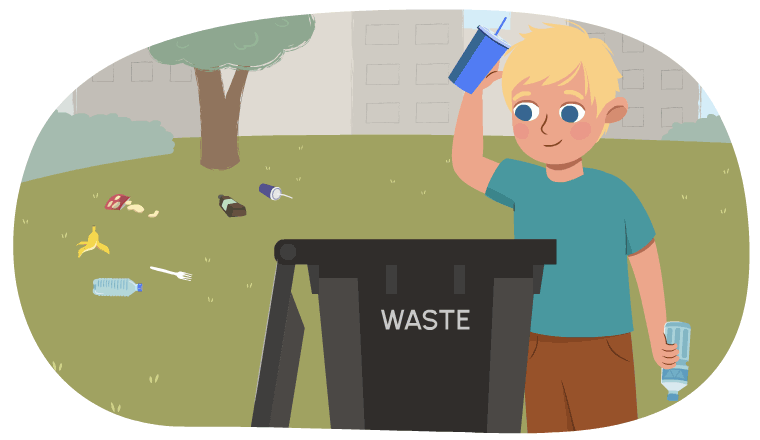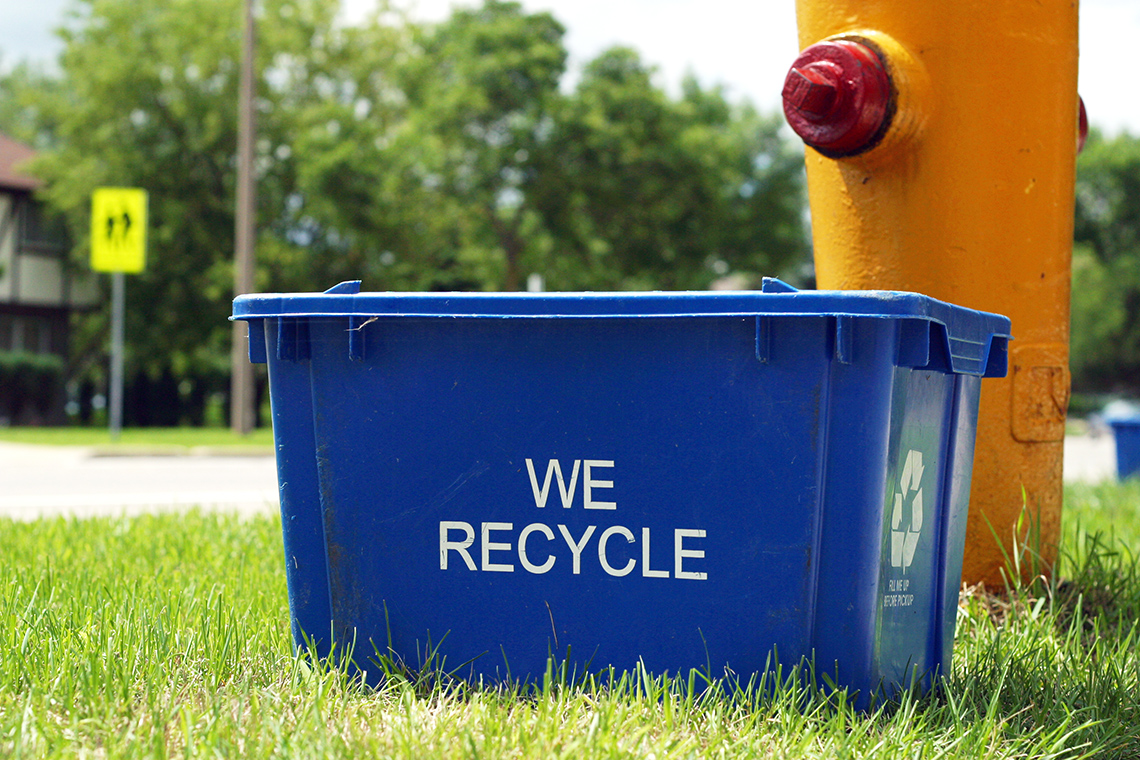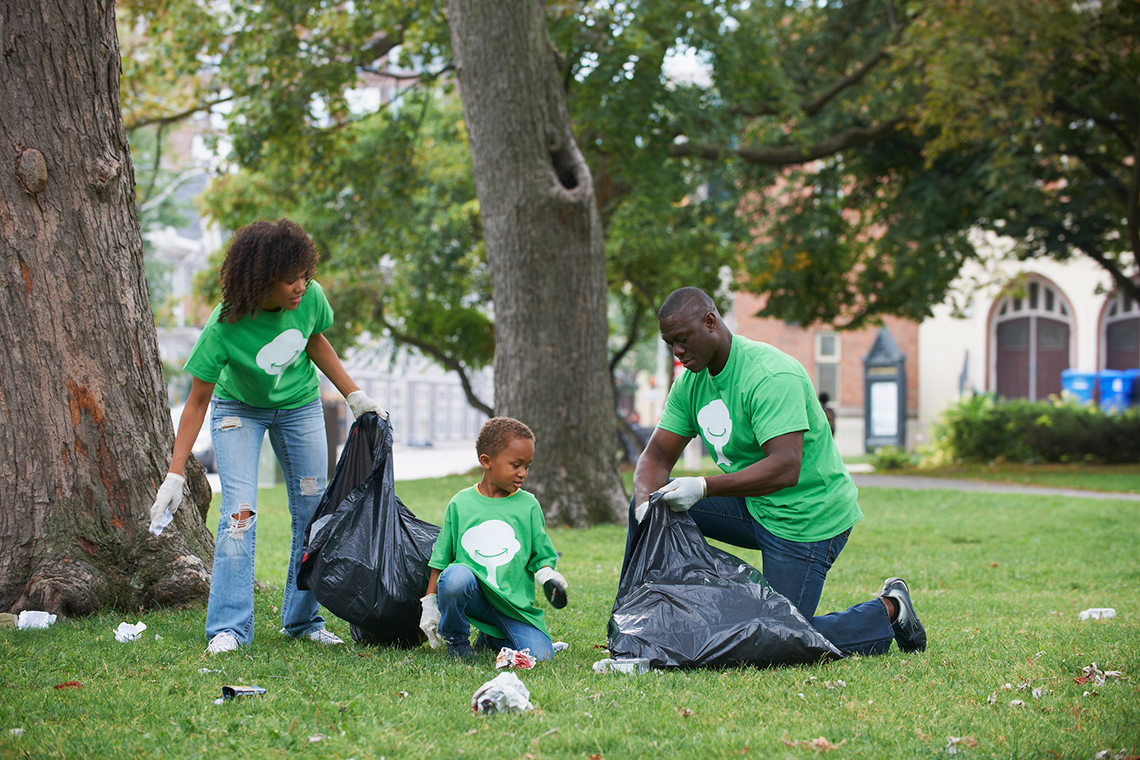Minds On
Let’s keep our world clean!
Explore the following eBook to learn about recycling.
Why do you think recycling is important?
What kinds of things can you recycle?
Action
All about recycling

When we recycle materials when we are done with them, there is less waste that stays in the environment.
It is very important to reduce waste to protect the animals and plants from getting sick and to keep the water clean.
In Ontario, there are different bins that are used for different types of waste. Review the following flashcards to learn about the different bins.
Let’s decide what goes in the garbage and what goes in the recycling! Place the cards into categories that best match. Use the arrow buttons to navigate between cards.
Innovation in Canada
This learning activity features emerging technologies, STEM contributions, and Canadian innovations that are making a difference.

The blue box: A Canadian contribution!

The blue box was an invention that came from testing out an idea in Kitchener, Ontario.
In 1983, the people of the city tried Nyle Ludolph’s idea to collect recyclable materials from homes. The idea spread around the world!
The common slogan on the Blue Boxes is “We recycle.” It was meant to tell the neighbourhood that this home was part of solving the problem of what to do with waste.
Learning more about how to recycle where you live means you can put each object in just the right container.
Reflection questions
Why is it important to sort our waste?
Press ‘Answer’ to learn why it is important to sort waste.
It is important to sort our waste to make sure that the right things go in the right spot. The bins are :
- recycling
- garbage
- compost
How does recycling help protect the environment?
Press ‘Sample Answer’ to access how recycling protects the environment.
Recycling helps to protect the environment because we have less waste going into the garbage. When things go in the garbage, they will end up in a pile in a landfill. So recycling means, less things in the landfill.

How things end up in the landfill. First, there is a cooking pot, which gets placed in a recycling bin. The pot is recycled into a metal pop can. The pop can is put into the garbage instead of being recycled, and the garbage is brought to the landfill.
Consolidation
Sharing your learning
When we recycle right, we make sure that the things we’ve used are ending up in the right spot. We’re helping keep the places where we live clean and healthy.
When we don’t put waste in its place, it can end up as pollution.

Now that you know what items go in the garbage and recycling bins, use your observations to teach others how to protect the environment by properly getting rid of their waste.
Pause Reflect
Pause and reflect
Think about the following questions:
- Was there an item that you thought went in the garbage bin, but that you learned went in the recycling bin?
- Was there an item that you thought went in the recycling bin, but that you learned went in the garbage bin?
- How will you share what you have learned about garbage and recycling with your classmates, friends or family?
Let’s review some things to help you share your learning:
Reflection
How do you feel about what you have learned in this activity? Which of the next four sentences best matches how you are feeling about your learning? Press the button that is beside this sentence.
I feel…
Now, record your ideas about your feelings using a voice recorder, speech-to-text, or writing tool.